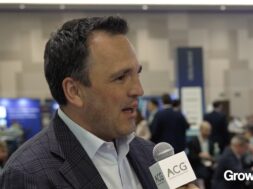Flipping the Switch on Municipal Transport
Electric bus maker Proterra is plugging into the municipal transportation market with an alternative to diesel fuel.
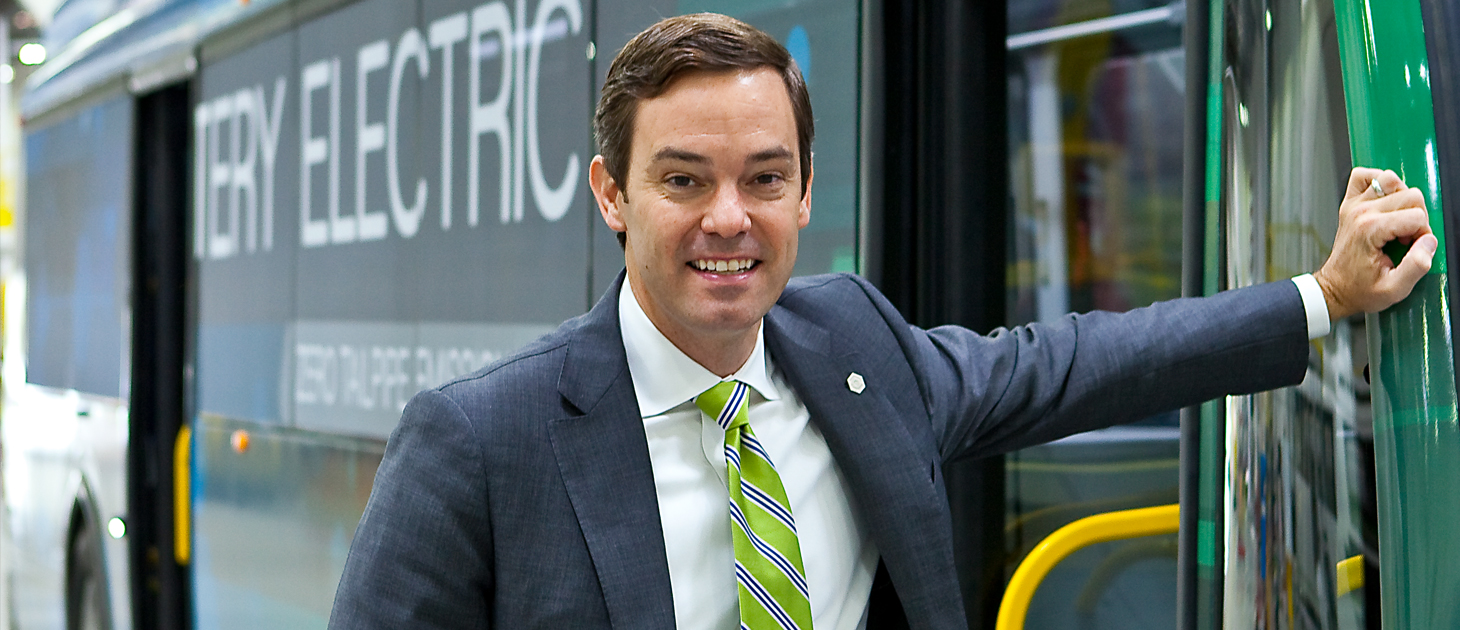
In 2010, Ryan Popple and Brook Porter were preparing to meet Al Gore, and they were nervous. Both admired the former U.S. vice president, who was a partner at venture capital firm Kleiner Perkins Caufield & Byers. Popple and Porter had recently started as junior partners at the firm, where their work included identifying investment opportunities in sustainability. “We need to sound smart and say something interesting to him,” Porter remembers thinking.
That “something” was their take on the future of heavy duty vehicles. Popple and Porter agreed transportation would eventually go electric as battery packs became better and cheaper. But which segment would transform first? Their conclusion: diesel vehicles that travel local routes like delivery trucks and transit buses. The argument seemed counter-intuitive, considering the buzz around electric cars. But going electric with large, heavy-duty vehicles addressed the shortcomings of diesel fuel in operation costs—not to mention air pollution.
“It became very clear that battery-powered EVs were going to start eating the entire global transit market over the next 20 years,” Popple says. An environmentally conscious Gore agreed, and in 2011 Kleiner Perkins and other investors (including General Motors) closed the initial $30 million funding round for a bus maker called Proterra. By 2015, Proterra’s revenue had grown to $28.7 million. This year, if it could ship its entire backlog order, the company would exceed revenue of $200 million. (It won’t be able to ship the full backlog due to constraints such as charging station construction.)
PROTERRA
What: Private equity-backed worldwide seller of consumer electronics and other branded products
Benefit: Enables fleet operators to eliminate dependency on fossil fuels and reduce costs
Customers: Municipalities, universities and commercial transit agencies throughout the United States
Vehicle Range: Some models can go up to 350 miles on a single charge
Funding: $140 million in equity funding to date
To boost its numbers, Proterra has travelled a road filled with bus-sized potholes. “We had failed starts,” says Porter, now a senior partner in Kleiner Perkins’ Green Growth Fund. “We had to make a really hard decision: Do you double down? And we had to double down a couple times.”
Investors also made a smart bet on Popple, Proterra’s current CEO, despite his lack of prior experience in the bus industry or leading a company. To help recharge a business shaped by new technology, Popple turned to a very old strategy— attract more customers by listening closely to what they need.
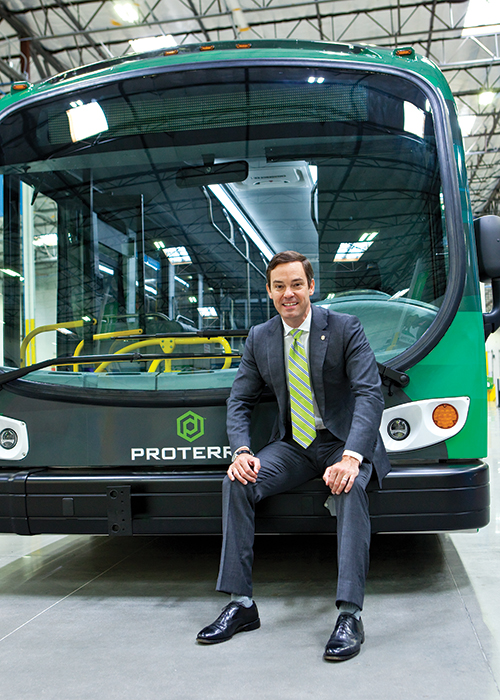
THE ROAD NOT TAKEN
Electric buses cost more than diesel, but save hundreds of thousands in fuel expenses over a vehicle’s lifetime (a minimum of 12 years, according to Federal Transit Administration guidelines). They dramatically reduce expensive brake repairs due to less braking— when drivers ease up on the accelerator, electric vehicles slow down more than others (the motor runs backward and recaptures kinetic energy to charge the batteries). What’s more, predictable bus routes help eliminate “range anxiety,” drivers’ fear of running out of juice.
Those points helped win the Al Gore green light. But for other investors, the electric-bus thesis was not an easy sell. “We had to do a ton of work to convince our partnership that this makes sense,” says Porter, whose career has centered on fossil-fuel alternatives. Before joining Kleiner Perkins, he co-founded two companies— one in biofuels and one in EVs (He also has more than a dozen patents related to clean energy, including an electric motorcycle that Time and Popular Science named one of the best inventions of 2005).
At Kleiner Perkins, the mere idea of public transportation—capital-intensive with long sales cycles—drew objections, as did the words “public transit bus.” “You can imagine the demographics of venture capitalists, romanticizing about that,” Porter jokes. A Proterra vehicle can do 0 to 20 mph in 6.8 seconds—zippy for a transit bus, but decidedly unsexy compared to a Tesla.
The product envisioned didn’t need to inspire sonnets, but it did need a promising ROI. Popple saw that in Proterra, which was founded by electric vehicle entrepreneur Dale Hill, an engineer by training. (“He’s one of our best business development executives now,” Popple notes). In 2008, Proterra designed the EcoRide BE35; with a 30-to- 40 mile range, it charged in less than 10 minutes. By 2010, the company had its first customer, Foothill Transit in Los Angeles County (Two years later, one of Foothill’s Proterra buses was featured in an episode of “Jay Leno’s Garage”).
Initial funding in 2011 helped the company move to Greenville, South Carolina, where it built a manufacturing facility. Investors hired an executive from a large commercial vehicles group to lead the business, a choice that seemed perfectly logical, but was wrong. “If you’re going to disrupt the bus industry, you don’t want to just do things like every other bus company,” Porter says. Proterra then turned to a former Honeywell executive who had run some 40 manufacturing plants. That CEO was also a poor fit. “The bus industry is really an assembly business, but Proterra is a little different, because it has to do technology as well—it has to build its own drivetrain and its own battery packs,” Porter says.
By 2014, Proterra’s metaphorical battery pack was draining. The company had added only five customers over five years. If its business had been an actual bus, it would have been careening down a mountain in treacherous weather, navigating switchbacks with no guard rails.
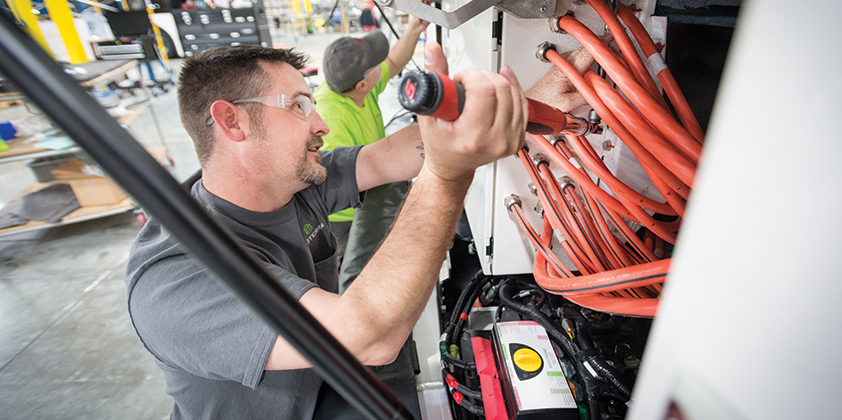
WHAT WOULD TESLA DO?
For Popple, Proterra’s rough ride was a familiar one. “He had lived this story,” Porter says. “He saw what it took to get to the other side.” Popple was Tesla’s director of finance from 2007 to 2010, during one of the bleakest chapters in the storied electric carmaker’s history; it nearly went bankrupt in 2008. (In April, Tesla surpassed General Motors in market capitalization.)
“As investors, probably the most important decision we can make is the right CEO,” Porter says. “Putting Ryan in the CEO seat was that moment.” Popple took over in 2014, after convincing investors to put tens of millions into a company that was flailing. He had to fix it.
The first step: Visit Proterra’s customers, as well as transit agencies that didn’t place orders, and listen to their concerns. Popple already knew about the early missteps with bus basics such as doors and windshield wipers that didn’t work and poorly placed buttons that made drivers’ jobs harder. “It reminds me a lot of the early challenges we had at Tesla,” he says. “We spent so much time on the core technology and not nearly enough time figuring out how a glove compartment worked.”
Proterra had addressed those problems, but Popple found a much a bigger flaw. Many transit agencies had longer routes not suited to Proterra’s short-range bus. After his listening tour, Popple delivered a difficult message to the board and investors: We need to develop a whole new product. Also, we need more money.
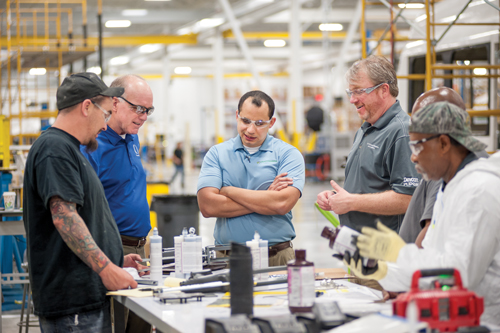
“Proterra is trying to solve a very significant challenge that metropolitan areas are facing as the population continues to grow and the need for clean energy is in greater demand.”
Neil Smith, Partner, Cross Country Consulting
In 2014, Kleiner Perkins and GM Ventures led a financing round of more than $30 million. The next year, Proterra raised an additional $55 million and introduced its longer-range bus— the Catalyst XR, which travels 200 miles on a single charge. The company moved headquarters from South Carolina to a better recruiting spot: Burlingame, California in Silicon Valley, just 20 miles north of Tesla (Besides Popple, Proterra’s ranks include more than a dozen former Tesla employees, including the COO and the director of battery engineering).
Popple’s commitment to listen and adapt even extended to bus maintenance workers. Their input during product redesign revealed an important insight. By shifting part placement, the company could simplify routine maintenance. “We try to think about the mechanic as well as the driver,” Popple says. Proterra also hosts quarterly roundtables to glean feedback from customers.
Last year, Proterra extended its buses’ range with the E2 model, which sells for about $740,000 and can go 350 miles on a single charge. The company also opened a second factory, east of Los Angeles. “We found it was costing us around $10,000 to ship a vehicle all the way to the West Coast from South Carolina,” Popple says.
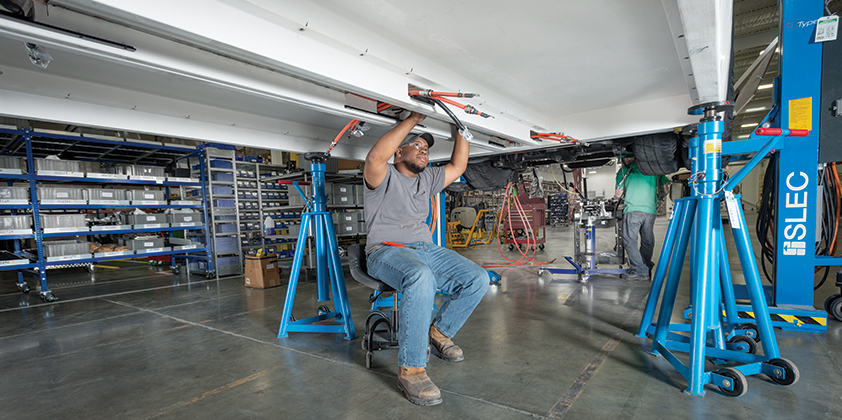
“With just our first two buses, we were saving over 500 gallons of diesel fuel a month.”
Donna DeMartino, San Joaquin RTD in California
WINNING ON THE LOCAL LEVEL
When Matt Horton joined Proterra as chief commercial officer three years ago, most transit agencies weren’t thinking about electrification. At that time, his sales team was tracking about $200 million worth of potential bus orders. “Three years later, it’s almost 10 times that,” Horton says. Last year, Proterra doubled its customer base. Bus price declines by an average of 35 percent have helped (in 2010, a Proterra bus cost about $1.2 million). More efficient manufacturing plays a role, as do cheaper battery packs, which dropped 80 percent since 2010, according to a McKinsey & Co. report.
Proterra has some buyers outside of public transportation, like universities and corporate shuttles, but transit agencies represent its sweet spot, generating 80 percent of sales. That includes San Joaquin RTD in California, with about 4.5 million trips annually. In 2013, it added two Proterra buses to its fleet of hybrid electrics. By next year, it will have 19 Proterra buses. As the hybrids reach the end of their product life, RTD replaces them with electric, and within the next 10 years, the fleet of 135 or so buses should be all electric. That’s part of a strategic plan to help clean up the environment, says Donna DeMartino, RTD CEO. She’s seen economic benefits, too. RTD’s diesel buses averaged 3 miles per gallon; hybrids doubled that. “With just our first two buses, we were saving over 500 gallons of diesel fuel a month,” she says. And with fewer parts to replace, RTD saves more than 30 percent on preventative maintenance costs.
“Proterra is trying to solve a very significant challenge that metropolitan areas are facing as the population continues to grow and the need for clean energy is in greater demand,” says Neil Smith, partner at Cross Country Consulting, which nominated Proterra for a growth award with ACG San Francisco (the company was a finalist). “The business model is really compelling, but it also has social responsibility as an underpinning.”
WHERE YOU DRIVE THEY WILL FOLLOW
More companies will follow that business model soon. By 2022, one in every five heavy-duty transit buses sold in North America is likely to be all-electric, according to Frost & Sullivan. “By 2018, all major bus OEMs will have [electric] buses in their product lineup,” says Chandramowli Kailasam, Frost & Sullivan mobility team leader. Topple says he welcomes additional competitors, noting that Proterra has the longest- range bus available and the overwhelming share of the U.S transit market. He uses this gauge—of the $55 million in annual grants provided by the FTA for zero-emission buses, about 80 percent went toward Proterra purchases last year.
That FTA Low and No-Emission Vehicle Deployment Program began during the Obama era. President Donald Trump’s administration may have different views on renewable energy and environmental protection, but Popple doesn’t think they will affect Proterra. “What we find is, at a community level, green is very different than at a state or federal political level. We’ve never run into somebody who’s been outspokenly in favor of air pollution,” he says.
In January, Proterra received $140 million in funding, including $60 million from new investors. Popple says the company plans to go public during the next few years, but before that happens, Proterra will explore other markets. A joint venture in Europe is one possibility as cities such as Paris and Amsterdam plan to eliminate diesel buses by 2025. Another possibility is heavy-duty vehicles beyond buses. In the 12 months ending in April, Proterra was contacted by more than 70 potential customers either outside of North America, or outside the transit-bus realm: garbage trucks, agricultural equipment, ferry boats—almost anything with a diesel engine.
Says Popple: “The hard thing about investing is predicting the future. You seldom get that right. You take a position on the record, deploy capital, and make a bet. When you’re right, it’s really satisfying.”
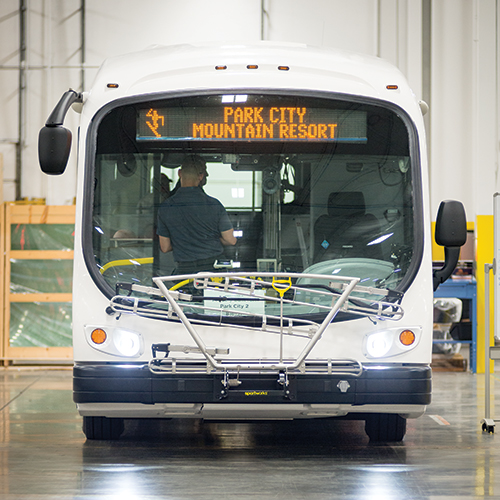
“We’ve never run into somebody who’s been outspokenly in favor of air pollution.”
Ryan Popple, CEO, Proterra

S.A. Swanson is a business writer based in the Chicago area. She frequently covers technology.
